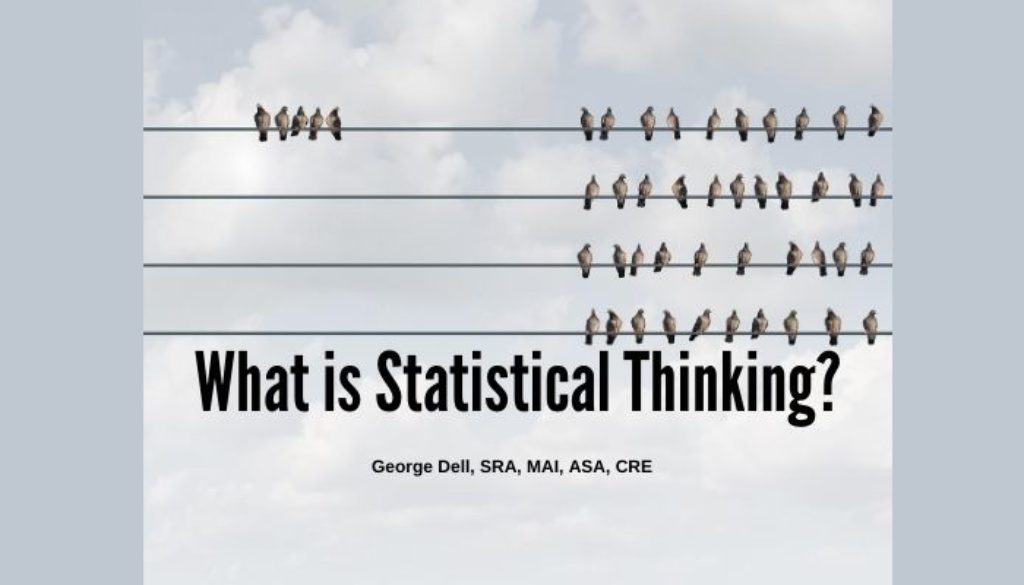Why should I care about statistical stuff?
Appraisal says: Pick some comps, compare, reconcile, and give a number. No statistics there. Data science says let the market pick the data, predict, and provide a reliability score. Traditional appraisal and modern data science have the same goal: help make decisions by analyzing data.
Statistical thinking is needed because the valuation problem is complex. You can’t just say because A is true, then B must be true. You have to say because A is true, B is probably true – and you have to consider the probability of ‘trueness.’
Statistical thinking recognizes that all relationships have some uncertainty. This is the biggest difference for today’s valuation problem. Legacy appraisal methods do consider uncertainty in the reconciliation. However, we are taught that reconciliation occurs “at the end of the valuation process.” The appraiser “considers the relative dependability and applicability of each approach.”
The main difference today is this: It is possible to measure the uncertainty. Variation exists in everything. The goal of thinking statistically is to understand and reduce variation.
In residential appraisal, one way of reducing uncertainty in the point value opinion – is to select comps which are similar – requiring as little adjustment as possible. In non-residential appraisal work, where typically appraisers use more comps, the spreadsheet adjustments should reduce the range (or tighten up the distribution) of adjusted indicators.
Statistics helps deal with uncertainty by quantifying it. There are two important outcomes: 1) You can quantify the reliability, and 2) You can judge its repeatability.
Recent authors, including Chris Drew, PhD indicate that there are four types of critical thinking skills. One is convergent analytical thinking, which applies memory, resources, and logic. Divergent thinking can be creative and even hopeful, especially where outcomes are vague. Like being playful for the sake of being playful. And there is creative thinking. This involves looking at a topic in unusual, alternative, and non-conventional ways. Creative thinking moves society forward by discovering things for us. And finally, there is critical thinking itself – which is broken down into three reasoning subtypes.
Deductive reasoning, where there is an assumption, logic, and a sure answer. Inductive reasoning has assumptions but acknowledges or measures the probability of the answer. In Evidence Based Valuation (EBV)© I have found the greatest gains have come where we are able to reduce to assumptions of a model, perform deductive analysis, and get a sure answer (like in our “price indexing” model). When the assumptions are precise, and well-presented – it is difficult to challenge, forming a solid basis for other models. Finally, there is abductive reasoning.
Abductive reasoning requires some prior or expert knowledge or assumptions. For example, in a typical AVM (Automated Valuation Model), there are assumptions that the property is an SFR, the data about the residence and comparables are ‘reasonably’ accurate, and that the model (regression, price update, or other secret algorithm) is appropriate for this query. Abductive reasoning is essentially formulating the question to ask, and the decision to apply an approach or specific model.
In appraisal, it is the appraiser who formulates a probable solution path (scope of work) and reconciles any discrepancies with explanation.
